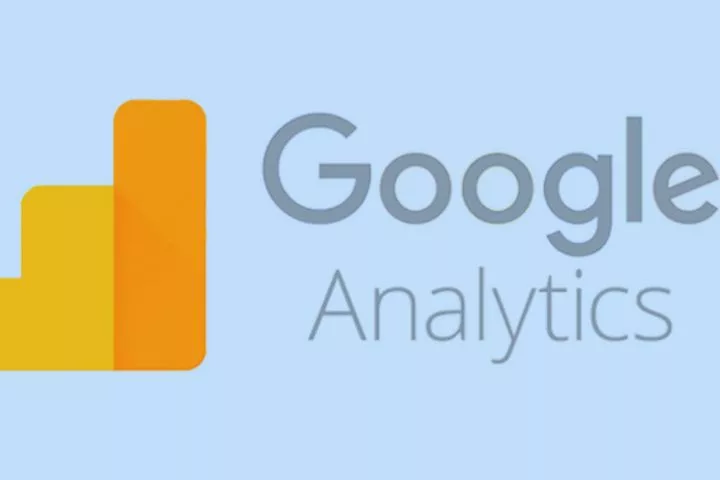Google Analytics For Beginners – How To Measure Your Website’s Success

Do you have a company website or your online shop? Then there is no way around Google Analytics. Here you can find out how you find the relevant key figures as a beginner and keep an eye on them, as we cover clearly about the topic ‘Google Analytics for beginners’.
Have you ever tried to analyze your website with Google Analytics? With the unmanageable selection of reports and key figures of the tool, you can quickly lose track.
However, that doesn’t have to be the case. Even without prior knowledge, you can use Google Analytics for beginners to track the entire interaction with your customers and readers without drowning in the flood of data.
We will show you how you can find your way around as a beginner in Google Analytics and analyze the relevant key figures.
Do I need Google Analytics?
Do you have a company website or your online shop? Then there is no way around Google Analytics. The tool helps you keep track of your website’s goals, such as purchasing a product, signing up for your newsletter, or subscribing to your service.
You can analyze the relevant critical figures with Google Analytics, derive the necessary adjustments from them, and thus optimize your website.
As the operator of an online shop, you can, for example, analyze the payment process and therefore identify and optimize steps with exceptionally high bounce rates.
Tip: Google Analytics is one of the most commonly used web analytics tools. But there are also alternatives.
How to set up Google Analytics
If you decide to use Google Analytics, you can set up the tool in a short amount of time.
- Set up an account:
First, you need a user account with Google, which you can create for free here. Once the account is created, you can add your website. Just follow the instructions in Google Help.
- Include tracking code
However, setting up an account is not enough. For the data for your website to be measured, you must embed a tracking code on your website. You can find instructions here.
Tip: Google Analytics is often criticized for violating data protection guidelines.
The top 3 analytics reports for beginners
After you have set up your Google Analytics account and deposited the tracking code, the tool is ready to use. The standard reports are already set up for you. As a beginner, you should keep an eye on the following words:
- Acquisition
The reports in the Acquisition category show you where your website visitors are coming from. If you select the menu item “All hits – source/medium,” you will get a list of your most important traffic sources. This can be Google search queries, Facebook posts, or paid advertising.
This overview will help you to assess which sources work best for your website and to focus on them.
Another critical point in the acquisition area is the “Search Console.” This area offers you in-depth insights into your presence in Google Search. For example, you can see which search results bring visitors to your website or which landing pages they are directed to.
Tip: Invest more in the sources that bring you a high number of sessions and also have a high conversion rate.
-
Behavior
You can find other relevant metrics in the Behavior category. To do this, go to the report under “Site Content – All Pages.” You get an overview of the most frequently visited pages.
This list gives you an overview of your pages’ relevance to the user and provides valuable information for other page designs.
-
Conversions
The “Conversions” report is of great importance for online shop operators. In the sub-item “E-Commerce – Payment Process,” you can see how many visitors cancel your payment process in the individual steps and thus find out which actions need to be optimized.
How to customize your Google Analytics reports
You can customize each report using dimensions, metrics, and segments.
A dimension is usually an attribute of the visitor to your website. For example, this can be the city where users are located or the operating system used.
Metrics for Google Analytics for beginners
Measured values are all values that can be measured using Google Analytics. The key metrics you should know are:
- Users: How many users have visited your website?
- Sessions: How many times has your website been visited? In contrast to the measured value of “Users.”
- Multiple visits by a user are also counted.
- Session Duration: How long do users stay on your site?
- Bounce Rate: What percentage of your users leave the landing page immediately?
- Exit Rate: What percentage of visitors will last view this page before leaving your
- site? In contrast to the bounce rate, the entire visit to the website is
- taken into account, not just the entry page.
- Conversion rate: what percentage of your user’s act (product purchase,
- newsletter registration, etc.)?
In addition to selecting different dimensions and metrics, you can customize the analysis of your website visitors through segments.
A segment describes a section of your visitors and can be defined by different criteria. Google Analytics is already delivered with predefined elements. You can also set up your segments.
Examples of custom segments
- Visitors from Germany who viewed more than three pages in one session
- Visitors from Germany, Austria, or Switzerland who visited the website three or more times in the selected period
- Buyers from Switzerland who
- accessed the Products and Services page.
The figure below shows revenue versus sessions. The acquisition channels are mapped using segments. Using the line chart and the associated table, you can, e.g., For example, you may find that direct access visitors have the highest eCommerce conversion rate.
